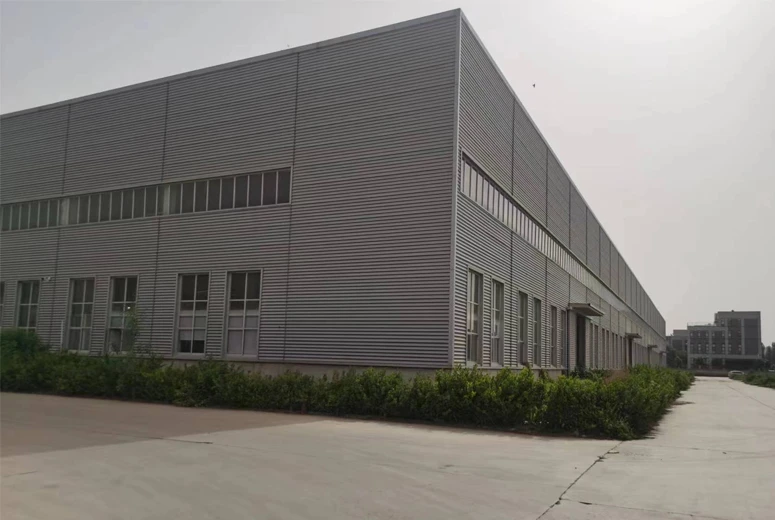Advanced Roof Rolling Machines for Efficient Construction and Structural Integrity
The Advancements and Importance of Roof Rolling Machines
In the realm of metalworking and manufacturing, roof rolling machines have emerged as invaluable tools, especially in the construction and roofing industries. These machines are specifically designed to form and shape metal sheets into various profiles that are essential for roofing applications. With advancements in technology, roof rolling machines have evolved, offering increased precision, efficiency, and versatility.
The Basics of Roof Rolling Machines
Roof rolling machines, often referred to as roll formers, are designed to mold metal sheets into specific shapes and profiles through a process known as roll forming. This involves passing a flat metal sheet through a series of rollers that progressively shape the material into the desired contour. The typical outputs of these machines include roofing panels, gutters, and other architectural elements made from steel, aluminum, or other metals.
Key Features and Components
Most roof rolling machines consist of several key components, including
1. Feed System This mechanism allows the metal sheet to be fed into the machine at a consistent speed, ensuring uniformity in the final product.
2. Roll Forming Stations These are the heart of the machine, where the actual shaping occurs. Each station consists of rollers that are strategically arranged to create specific angles and grooves in the metal sheet.
3. Cut-off Mechanism Once the metal sheet has been formed to the desired length and shape, the cut-off mechanism trims it to the necessary dimensions.
4. Control System Modern roof rolling machines are equipped with advanced control systems that allow operators to easily adjust parameters such as speed, temperature, and pressure, enhancing the overall efficiency of the production process.
Applications in the Industry
The applications of roof rolling machines are vast. They are primarily used for producing roofing materials that are not only functional but also aesthetically pleasing. Common applications include
- Residential Roofing Roof panels created through roll forming are lightweight, durable, and resistant to weather conditions, making them ideal for homes. - Commercial Buildings The efficiency of roof rolling machines allows for the production of large quantities of roofing materials suitable for commercial infrastructure.
roof rolling machine

- Agricultural Structures Many agricultural buildings use roll-formed metal sheets because they provide excellent protection against the elements while being cost-effective.
Advantages of Using Roof Rolling Machines
The use of roof rolling machines comes with numerous advantages
1. Efficiency These machines can produce large volumes of roofing materials quickly, which means faster project completion times.
2. Cost-Effectiveness By reducing labor costs and minimizing waste, roof rolling machines allow manufacturers to offer competitive pricing.
3. Customization Modern machines are capable of producing customized profiles, enabling builders and contractors to meet specific design requirements.
4. Durability The materials produced are typically stronger and more durable than traditional roofing solutions, providing longevity and low maintenance needs.
Future Trends
As technology continues to advance, the future of roof rolling machines looks promising. Innovations such as automation and smart manufacturing are poised to enhance their capabilities further. The integration of IoT (Internet of Things) technology can facilitate real-time monitoring and maintenance, reducing downtime and increasing production efficiency.
Moreover, the push towards sustainability in construction means that manufacturers are looking into eco-friendly materials and processes. Roof rolling machines will likely adapt to this trend by focusing on recycling metal scrap and utilizing sustainable sources.
Conclusion
In conclusion, roof rolling machines play a crucial role in the roofing industry, providing essential materials for various applications. Their efficiency, cost-effectiveness, and adaptability make them indispensable for manufacturers. With ongoing advancements, these machines will continue to shape the future of construction and architectural design, ensuring that they meet the demands of both the market and the environment. As the industry evolves, roof rolling machines will undoubtedly remain at the forefront of innovation, driving progress and efficiency in metal forming processes.
-
High Frequency Straight Seam Welded Pipe Production Line-BzZhou Xinghua Machinery Equipment Manufacturing Co., LTD.|line pipe steel&welded gas pipeNewsJul.30,2025
-
High Frequency Straight Seam Welded Pipe Production Line-BzZhou Xinghua Machinery Equipment Manufacturing Co., LTD.|High Precision&Automated SolutionsNewsJul.30,2025
-
High Frequency Straight Seam Welded Pipe Production Line - BzZhou Xinghua Machinery Equipment Manufacturing Co., Ltd.NewsJul.30,2025
-
High Frequency Straight Seam Welded Pipe Production Line-BzZhou Xinghua Machinery Equipment Manufacturing Co., LTD.|Precision Welding, High EfficiencyNewsJul.30,2025
-
High Frequency Straight Seam Welded Pipe Production Line|BzZhou Xinghua|Precision Welding&EfficiencyNewsJul.30,2025
-
High Frequency Straight Seam Welded Pipe Production Line - BzZhou Xinghua|Precision Engineering&EfficiencyNewsJul.30,2025


